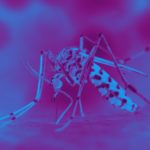Link to Pubmed [PMID] – 25688018
Philos. Trans. R. Soc. Lond., B, Biol. Sci. 2015 Apr;370(1665)
Development times of eggs, larvae and pupae of vectors of onchocerciasis (Simulium spp.) and of Onchocerca volvulus larvae within the adult females of the vectors decrease with increasing temperature. At and above 25°C, the parasite could reach its infective stage in less than 7 days when vectors could transmit after only two gonotrophic cycles. After incorporating exponential functions for vector development into a novel blackfly population model, it was predicted that fly numbers in Liberia and Ghana would peak at air temperatures of 29°C and 34°C, about 3°C and 7°C above current monthly averages, respectively; parous rates of forest flies (Liberia) would peak at 29°C and of savannah flies (Ghana) at 30°C. Small temperature increases (less than 2°C) might lead to changes in geographical distributions of different vector taxa. When the new model was linked to an existing framework for the population dynamics of onchocerciasis in humans and vectors, transmission rates and worm loads were projected to increase with temperature to at least 33°C. By contrast, analyses of field data on forest flies in Liberia and savannah flies in Ghana, in relation to regional climate change predictions, suggested, on the basis of simple regressions, that 13-41% decreases in fly numbers would be expected between the present and before 2040. Further research is needed to reconcile these conflicting conclusions.

